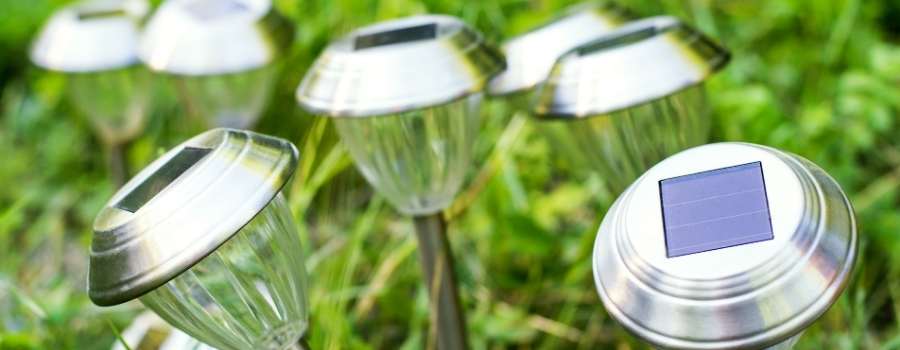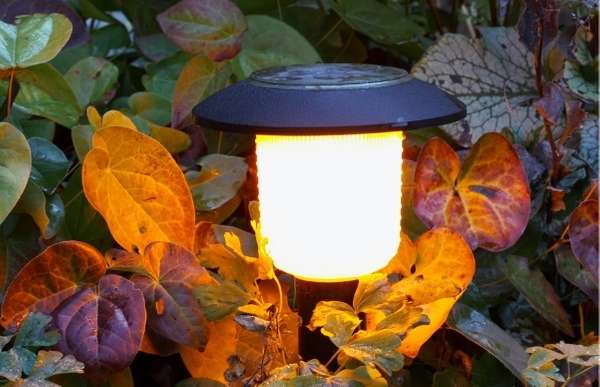
Solar lights are innovative lighting solutions that harness the power of the sun to provide illumination. They are equipped with photovoltaic (PV) panels that convert sunlight into electricity, which is stored in rechargeable batteries.
Table of Contents
Why is there an On/Off Switch
Solar lights have an on/off switch so users can control the lighting output and conserve energy when the lights are not needed. This feature allows for customization, enabling users to adjust the lighting duration and brightness according to their preferences or specific requirements.
The on/off switch provides users with the ability to preserve battery power, especially during periods of low activity or when the lights are not in use.
By turning off the lights when they are not required, users can conserve energy and maximize the available power stored in the batteries. This not only contributes to sustainable energy usage but also ensures that the solar lights remain operational for a longer duration, reducing the need for frequent recharging or battery replacements.
In addition to energy conservation, the on/off switch on solar lights offers safety and security benefits. Users can turn off the lights during maintenance or repair work, preventing accidental activation and potential hazards.
How do you Charge Solar Lights with an on/off Switch
Charging solar lights with an on/off switch generally involves a few simple steps:
- Locate the On/Off Switch: Most solar lights have a small switch located on the underside or back of the unit.
- Set to On Position for Charging: For the solar light to charge, the switch needs to be in the “On” position.
- Place in Direct Sunlight: Position the solar light in an area where it can receive maximum sunlight throughout the day.
- Allow Adequate Charging Time: Solar lights generally need about 6 to 8 hours of direct sunlight to charge fully.
- Turn Off if Desired: Once charged, you can either leave the switch in the “On” position for the light to automatically turn on at dusk, or you can turn it off to save the stored energy for when you need it.
Understanding the On/Off Switch
The on/off switch is a fundamental component of solar lights, allowing users to control the activation and deactivation of the light source. When the switch is in the “on” position, the solar light is ready to illuminate when triggered by specific conditions, such as low light levels or motion detection.
Switching the light to the “off” position prevents it from turning on even when the triggering conditions are met, conserving energy and preserving battery power.
Where Is the On/off Switch Usually Located?
The on/off switch on a solar light is commonly found on the housing of the light itself. Manufacturers typically position the switch in a convenient and accessible spot to allow users to easily turn the light on or off as needed.
This can include locations such as the backside of the solar panel, the base of the light fixture, or along the side of the housing.

Potential Problems
The switch may become loose or develop corrosion over time, resulting in poor contact or difficulties in turning the light on or off.
Additionally, if the switch is exposed to harsh weather conditions or excessive moisture, it may experience water damage, which can impair its operation.
Regular maintenance, such as cleaning and inspecting the switch, can help identify and address any potential problems to ensure proper functioning of the on/off switch in solar lights.
Battery Preservation and Extended Usage
The on/off switch is helpful in preserving the battery power of solar lights. When the lights are not required, switching them off conserves energy and prevents unnecessary drain on the batteries.
This conservation ensures that the stored energy is available for longer periods, maximizing the usage time of the solar lights.
Utilizing the On/Off Switch During Emergencies and Power Outages
Since solar lights operate independently of the electrical grid, users can rely on them as a reliable source of illumination when other forms of lighting are unavailable. By activating the on/off switch, users can ensure that their outdoor spaces remain well-lit during critical situations, enhancing safety and visibility for themselves and others.
Overcoming Limitations

The on/off switch helps overcome certain limitations associated with solar lights.
For example, during periods of inclement weather or low sunlight conditions, solar lights may struggle to charge fully.
By utilizing the on/off switch judiciously, users can conserve the limited battery power for times when it is truly needed, compensating for the reduced charging capability.
This flexibility allows users to adapt to challenging circumstances and ensure that their solar lights continue to function effectively even in less ideal conditions.
Maintenance and Care Tips
Regularly cleaning the solar panels is crucial for ensuring optimal efficiency of solar lights. Over time, dust, dirt, and debris can accumulate on the panels, reducing their ability to absorb sunlight.
To clean them, gently wipe the surface with a soft cloth or sponge dampened with water or a mild cleaning solution. Avoid using abrasive materials that may scratch the panels. By maintaining clean solar panels, you can maximize the charging capability and overall performance of your solar lights.
Checking Battery Health and Performance
To ensure the longevity and functionality of your solar lights, it is essential to periodically check the health and performance of the batteries.
Start by inspecting the battery compartment for any signs of corrosion or damage. Clean the battery terminals if necessary, using a cloth or brush and a mixture of baking soda and water.
Additionally, monitor the battery charging and discharging patterns. If you notice a significant decrease in battery life or inconsistent performance, it may be time to replace the batteries with fresh ones to maintain optimal operation of your solar lights.

Proper Care to Prevent Water Damage
Solar lights are designed to withstand outdoor conditions, but it is important to take precautions to prevent water damage. Ensure that the on/off switch and battery compartment are securely sealed to prevent moisture ingress.
Regularly inspect the seals and gaskets for any signs of wear or damage, replacing them if needed. Additionally, position the solar lights in areas where water accumulation or pooling is unlikely to occur. By taking these preventive measures, you can protect your solar lights from water damage and extend their lifespan.
Troubleshooting Common Issues
Battery Problems and Solutions
If you encounter issues with the batteries of your solar lights, there are a few troubleshooting steps you can take. First, make sure that the batteries are properly connected and inserted in the correct orientation.
If the batteries are correctly installed but not charging or providing sufficient power, it may be necessary to replace them with new ones.
Check for any loose or corroded battery connections and clean them if necessary. Regularly maintaining and replacing the batteries as needed will help resolve common battery-related issues and ensure the optimal performance of your solar lights.
Light Flickering or Inconsistent Performance
If you notice light flickering or inconsistent performance in your solar lights, there are a few factors to consider.
Start by checking the positioning of the solar panels to ensure they are receiving adequate sunlight. Obstructions such as shadows from nearby objects or overgrown foliage can affect the charging efficiency.
Inspect the light sensor and ensure it is clean and unobstructed. If the problem persists, it may indicate a faulty light sensor or wiring issue, and it is recommended to consult the manufacturer or seek professional assistance for further troubleshooting and resolution.
Final Thoughts
Solar lights with an on/off switch offer numerous advantages and customization options for users. Understanding the functionality of the on/off switch allows for efficient energy usage, extended battery life, and the ability to tailor the lighting experience to individual needs. By utilizing the on/off switch effectively, users can conserve energy during periods of low activity, customize the brightness and duration of illumination, and overcome limitations associated with solar lighting.
Regular maintenance and care will help maintain your solar lights and give them a longer life. Cleaning the solar panels, checking battery health, and preventing water damage through proper care contribute to improved efficiency and extended lifespan. Troubleshooting common issues such as battery problems and light flickering ensures that any concerns are promptly addressed, allowing for uninterrupted operation and consistent performance.
Solar lights with an on/off switch provide not only convenience but also safety benefits. The ability to control the lighting output enhances security and allows for reliable illumination during emergencies and power outages. Furthermore, solar lights offer an eco-friendly alternative to traditional lighting options, reducing reliance on fossil fuels and contributing to a sustainable future.
By using solar lights and understanding the significance of the on/off switch, users can create a well-lit and energy-efficient outdoor environment. Whether it’s illuminating pathways, enhancing outdoor aesthetics, or providing safety and security, solar lights offer a versatile and environmentally conscious lighting solution.
